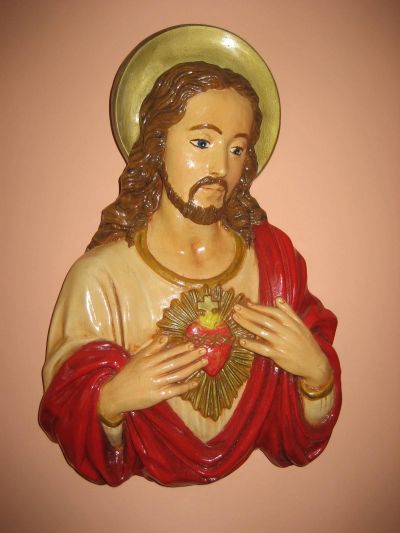Molte persone sono superstiziose e lo sono indipendentemente da cultura, luogo di origine, estrazione sociale o livello di istruzione. In generale si può definire superstizione ogni atto al quale si attribuisce il potere, misterioso e irrazionale, di favorire un evento positivo o di scongiurarne uno negativo. Toccare ferro, indossare un indumento particolare o portare con sé un oggetto porta fortuna sono solo alcune tra le centinaia di superstizioni che l’uomo ha inventato. Per religione invece, si intende quell’insieme di credenze, vissuti, riti che coinvolgono l’essere umano o una comunità, nell’esperienza di ciò che viene considerato sacro, in modo speciale con la divinità, oppure è quell’insieme di contenuti, riti, rappresentazioni che, nell’insieme, entrano a far parte di un determinato culto. Parte 2.
The use of images or material objects in religious worship has been a contentious issue in Christian history especially for non-Roman Catholics. Many Protestants consider practices such as the wearing of scapulars and the veneration of statues and flat images of the Virgin Mary and saints as idolatry, but Catholics do not agree.
“Catholic Answers,” a ministry that began 40 years ago, said that religious art is a vehicle of expression to bring out an inner feeling to honor and glorify God. Religious statues or paintings or prints exist simply to remind Catholics of the One True God. They are not idols that take the place of God.
There are some uses for religious statues that have maintained their sacredness and some that have become trendy. Burying a statue of Saint Joseph upside down in order to sell one’s home more quickly is one of the latter. Some real estate agents even give their clients a Saint Joseph statue and there are many choices of “Saint Joseph Home Sale Kits” on Amazon. Some sources attribute this tradition to Saint Teresa of Avila who, in hoping to acquire more land for new convents, prayed to Saint Joseph, buried medals with his image and shortly thereafter, acquired the land. Eventually, the medals became statues and Saint Joseph became the patron saint of selling homes. Superstition or religion? If one attributes the “power” to the physical act of putting a statue in the ground and not the religious act of praying to Saint Joseph for help, then most would consider that superstitious.
When my sister, Annette, was selling her house, a neighbor gave her a statue of St. Joseph and told her to bury it upside down in her front yard so that she would sell the house more quickly. I am happy to say she didn’t do it. Perhaps she prayed instead. Regardless, she didn’t have a problem selling her house.
Catholics regard saints as special guardians; their statues may be found adorning many Catholics’ front yards. Saint Francis, arguably the best loved of the Catholic saints, founder of the Franciscan order, was a pious vegetarian ascetic. He is the patron saint of animals and the environment because he loved all creatures. Saint Francis would probably be very disheartened if he knew about the destruction of our present-day environment. Were I a practicing Roman Catholic, I would pray to Saint Francis since the environment is a big concern of mine. My mother, who is a believer, has a statue of Saint Francis placed in the yard amongst the bushes and flowers because she loves her vegetable garden and the deer that travel through her yard, although she doesn’t like them nearly as much when they eat her vegetables and flowers.
Religious statues were in my grandparents’ houses and are still everywhere inside my mom’s house. They were a part of our life as decoration and veneration to remind us of our Catholic faith.
My mother inherited her parents’ vintage religious statues and framed images and they all found a home in her guest bedroom. I always thought that anyone who slept there would be compelled to be “good” during the day because at night at least five sets of eyes would be on them, mostly Mary’s and Jesus’s. I’m sure some felt like pulling the sheets over their head to avoid all those piercing eyes watching them. I was just glad that I didn’t have to sleep in there.
My mother would make the sign of the cross when she would pass these statues or kiss the framed image of Jesus or the Pope. As a child, without explanation of this behavior or a reason for the plethora of religious paraphernalia, I found it strange and more than disconcerting. Those eyes! Walking through Nonna Nuccia’s bedroom past the concave bust of Jesus, my eyes locked with his almost magnetically in fascination and fear. Afraid to break contact, my gaze was fixed by his until I was safely out of the room.
Perceptions of religious imagery in natural phenomena, such as the face of Jesus or other Christian icons seen in food or other objects are viewed as having meaning to the perceiver and often others as well. The most recent viral online image was that of Jesus pointing to the sky seen by a woman in the flames burning Notre Dame Cathedral. Many religious believers view these images as real manifestations of miraculous origin, but skeptics call it pareidolia, a phenomenon whereby imagined perceptions are given meaning where it does not actually exist.
Are you a believer or a skeptic?



